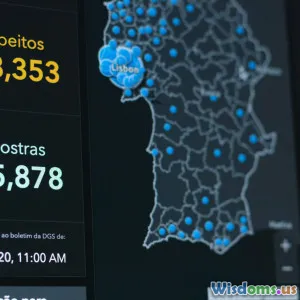
The Role of AI in Modern Policing
8 min read Explore how AI is transforming modern policing with predictive analytics, facial recognition, and smart investigations. (0 Reviews)
The Role of AI in Modern Policing
Artificial Intelligence (AI) is no longer the futuristic concept confined to sci-fi novels and big tech labs; it has become an integral part of various sectors, including the realm of modern policing. As crime becomes more sophisticated with technology, law enforcement agencies across the globe have started harnessing AI’s potential to stay one step ahead. But how exactly is AI reshaping criminology and crime investigation? This article delves deep into the multifaceted role that AI plays in transforming how policing operates in the 21st century.
Introduction: Why AI is a Game Changer in Policing
Policing historically depended on the investigative acumen of officers, witness testimonies, physical evidence, and manual data analysis. However, the exponential surge in data availability and the complexity of criminal activities require more advanced tools. AI steps in as a powerful ally enabling police to analyze vast amounts of information swiftly, identify patterns invisible to the human eye, and anticipate criminal activity before it occurs.
The integration of AI promises faster investigations, optimized resource allocation, and enhanced public safety. Yet, it simultaneously raises pressing questions about privacy, algorithmic bias, and accountability. Understanding the capabilities and limitations of AI in policing is critical for crafting effective and ethical law enforcement strategies.
Predictive Policing: Forecasting Crime with Algorithms
Perhaps the most talked-about AI application is predictive policing, where AI systems analyze historical crime data, socio-economic indicators, and environmental factors to forecast where crimes are likely to happen.
Real-World Example: PredPol
PredPol (Predictive Policing) is a prominent software used by police departments in cities like Los Angeles and Chicago. It uses machine learning to predict hotspots by analyzing crime types, times, and locations. Data from the Los Angeles Police Department showed a significant reduction in certain types of crimes after PredPol implementation.
However, these systems are not without controversy. Studies reveal that predictive models can perpetuate existing biases — if past policing disproportionately targeted minority neighborhoods, AI systems might unfairly forecast higher crime rates there, leading to over-policing.
Balancing Act
To mitigate these risks, researchers suggest combining AI predictions with community input, transparency about datasets, and continuous monitoring for bias. This balance helps maintain effectiveness while promoting fairness and civil rights.
Facial Recognition: Identification and Accountability
Facial recognition technology (FRT) powered by AI is another transformative tool in modern policing. By comparing faces captured on surveillance footage against databases of known offenders, law enforcement can expedite suspect identification.
Impact and Controversy
FRT helped apprehend criminals in several high-profile cases, such as capturing suspects involved in the January 6 Capitol riot in the United States. A Northamptonshire Police study in the UK demonstrated that AI-driven facial recognition reduced the time required to process suspects dramatically.
Yet, the technology is also fraught with challenges. Accuracy can differ significantly based on race, gender, and lighting conditions, leading to potential false positives or unfair targeting, particularly of minorities. Critics like the ACLU argue for strict regulations or moratoriums to prevent civil liberties violations.
AI in Investigations: Smart Analysis and Forensics
AI extends beyond prediction and identification into intelligent data analysis, aiding investigators in connecting dots faster and more accurately.
Case Management and Evidence Analysis
Modern AI tools can scan through thousands of documents, CCTV recordings, communications, and social media posts within seconds. The FBI, for instance, employs AI in analyzing digital evidence in cybercrime investigation, uncovering hidden links between suspects.
In forensic science, AI enhances fingerprint recognition and DNA matching speed and reliability. Tools like Clearview AI aggregate public images to match individuals involved in crimes, though this approach too invites privacy concerns.
Operational Efficiency: Optimizing Police Resources
Beyond direct crime-solving, AI optimizes everyday police work:
- Resource allocation: AI helps schedule patrols intelligently based on crime patterns, optimizing officer deployment.
- Automated Reporting: Natural language processing (NLP) systems automatically generate reports, reducing paperwork and letting officers focus on fieldwork.
- Emergency Response: AI-powered dispatch systems determine the fastest routes and the necessary units to send, improving response times.
As an illustration, the Singapore Police Force harnesses AI analytics to improve traffic enforcement and crowd control during major events.
Ethical Considerations and Future Outlook
While AI offers unprecedented capabilities, it also forces us to address ethical imperatives:
- Bias and fairness: Avoiding replication of societal prejudices in AI models.
- Privacy: Protecting citizens from intrusive surveillance.
- Transparency: Ensuring AI decision-making processes are explainable and accountable.
Policymakers must work closely with ethnographers, technologists, and communities to establish safeguards that uphold both security and human rights.
Future Trends
Looking ahead, AI is poised to integrate with emerging technologies such as drone surveillance, Internet of Things (IoT) devices, and blockchain for evidence integrity. The potential for smarter, community-focused policing models is enormous, provided development emphasizes ethical standards.
Conclusion: Navigating the AI-Policing Partnership
AI represents a paradigm shift in criminology and crime investigation, enhancing predictive accuracy, speeding investigations, and increasing operational efficiency in law enforcement. Its power to analyze big data, uncover hidden insights, and automate tasks provides tangible benefits that modern police forces desperately need.
However, the technology's deployment must be hand-in-hand with vigilant ethical governance to prevent new forms of injustice or discrimination. AI will never replace human judgment, empathy, and accountability but can act as a potent tool for police focused on transparency, fairness, and public trust.
Policymakers, technologists, and society must collaborate to unlock AI’s full potential in policing — creating safer communities while upholding the core values of justice.
As Sherman famously noted, "Good policing must embody the ideals of accountability and fairness." In the age of AI, these principles are more crucial than ever.
References:
- Lum, K., & Isaac, W. (2016). To predict and serve?. Significance.
- ACLU Reports on Facial Recognition
- Los Angeles Police Department Crime Data
- Singapore Police Force AI Initiatives
- IBM AI in Law Enforcement
Rate the Post
User Reviews
Popular Posts





















